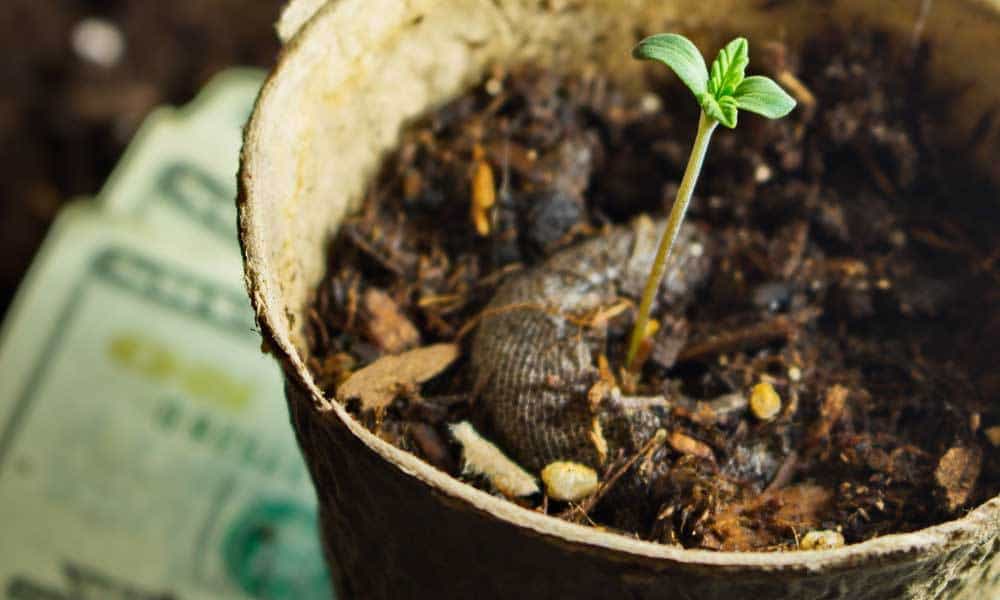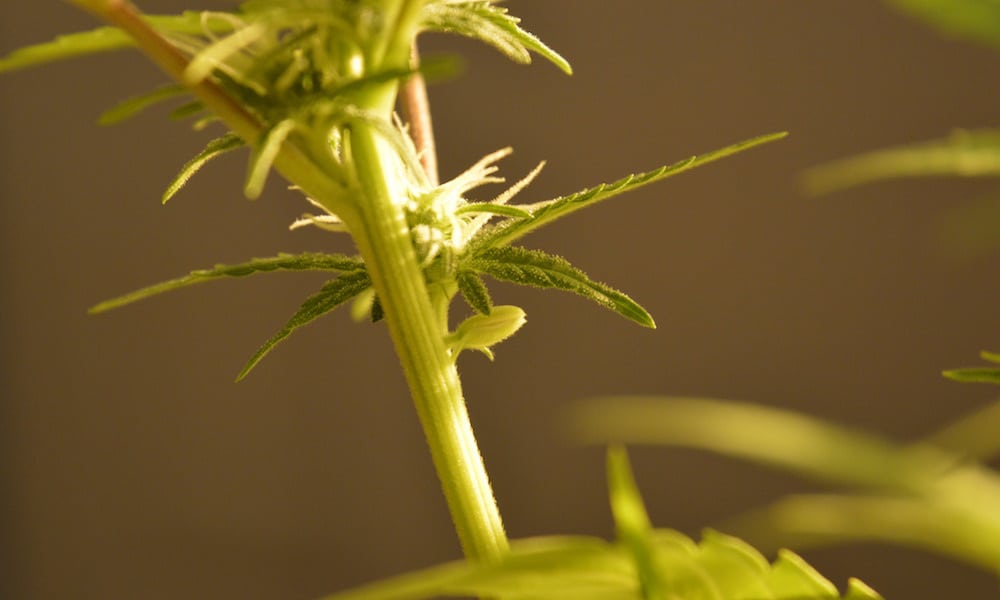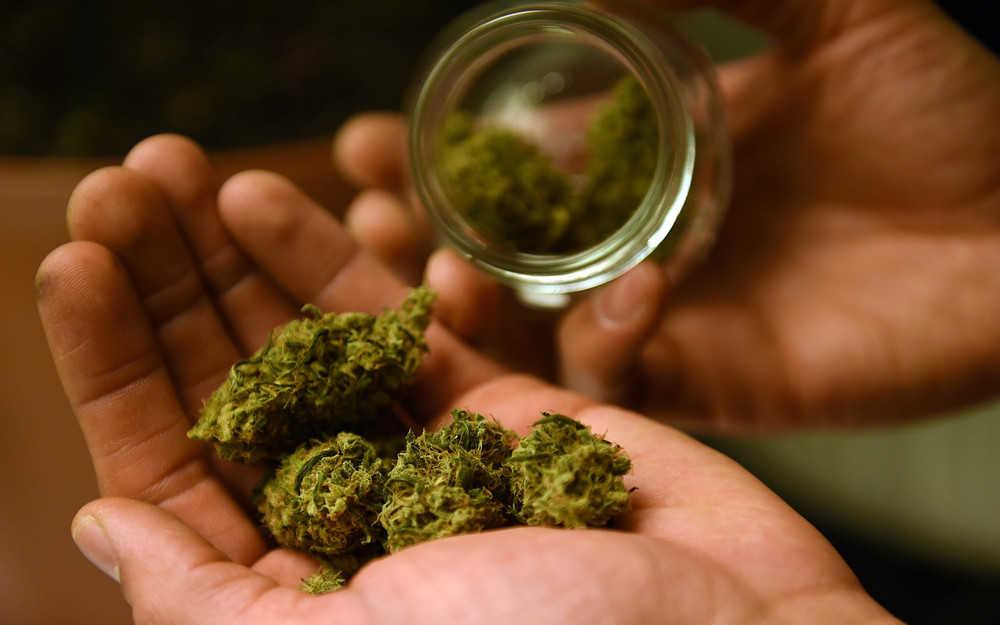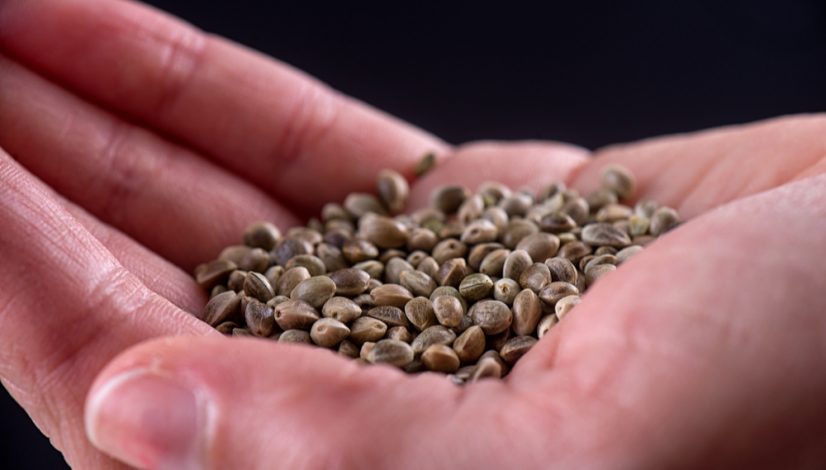The Anatomy of a Marijuana Plant
Many people who appreciate cannabis are most familiar with just two parts of the marijuana plant—the flowers that they smoke and the leaf, which has become an iconic image of pot culture. But how do these two parts figure into the overall anatomy of a marijuana plant? And what other parts make up the plant we know as cannabis?
Marijuana Plant Anatomy 101
Cannabis plants are flowering annuals that are dioecious, meaning there are separate male and female plants. Male plants produce male flowers and pollen while female plants produce female flowers and seeds. Besides their flowers, the anatomy of a marijuana plant does not differ much between male and female plants.

Shutterstock
Seeds
A cannabis seed is a tiny plant embryo tucked away safely inside a hard shell. When the environmental conditions, including temperature and moisture, are just right, the seed will germinate and begin to grow. The new plant is able to sense its orientation and sends its first pair of rounded seed leaves known as cotyledons upwards, while the emerging root tip burrows down into the growing medium.

Shutterstock
Roots
The root tip that emerges from the seed lengthens and thickens as it grows, becoming the taproot of the plant. Lateral roots grow from the taproot, branching off and radiating from the plant throughout the soil. All along this underground infrastructure, the taproot and lateral roots bristle with tiny root hairs, which are able to absorb the water and nutrients necessary for plant growth from the soil.

Miran Rijavec/ Wikimedia Commons
Leaves
Once the cotyledons have broken through the surface of the soil and are exposed to sunlight, they begin to produce energy for the plant to grow through the process of photosynthesis. Within a day or two, the first pair of true leaves begins to emerge from between the seed leaves.
Although each leaf of the first pair has only one leaflet, they already show the characteristic pointed tip and serrated edge. As additional pairs of leaves emerge and grow, they add a pair of leaflets until reaching the maximum number of leaflets per leaf, which can be five, seven, nine, or even more, depending on the strain.
The leaves use energy from the sun to combine water and carbon dioxide into plant sugars. These sugars are then used by the plant as a source of energy to fuel the plant’s growth and biologic processes.

Cannabis Pictures/ Flickr
Stems
Each new pair of leaves pushes up toward the sunlight on a stem growing from the previous pair of leaves. As this main stem grows, it elongates and thickens, becoming the portion of marijuana plant anatomy that forms the structure of the plant and supports the leaves and flowers.
All around the main and lateral stems (branches) is a network of vascular tissue that allows water and nutrients to flow throughout the plant. Located along the length of stems at somewhat regular intervals are structures known as nodes. From these slightly thicker points of the stem grow leaves, branches, and under the right conditions, even roots.

Shutterstock
Flowers
Because cannabis plants are dioecious, each will normally only have male or female flowers, although hermaphroditic plants with both types of flowers are not uncommon. Male flowers produce pollen that fertilizes female flowers, which in turn produce seeds.
Before they open, male flowers resemble tiny pale yellow or light green bananas, the source of the word “nanners,” which is slang for male flowers. Female flowers have a teardrop shaped base from which protrude the pistils, fine hair-like structures that capture windborne pollen from the air to fertilize the flower and produce seed.
Why Learn About the Anatomy of a Marijuana Plant?
Learning about marijuana plant anatomy can give cannabis users a deeper appreciation of the plant and its potent flowers. For a hands-on lesson in the anatomy of a marijuana plant, try growing one yourself!
The post The Anatomy of a Marijuana Plant appeared first on High Times.


